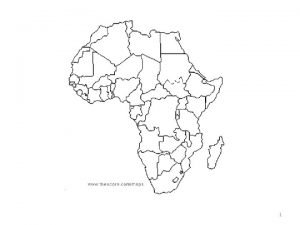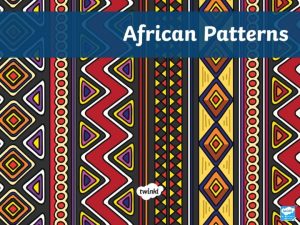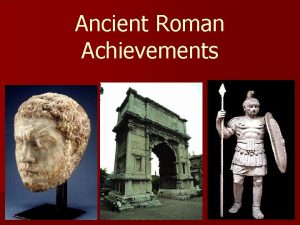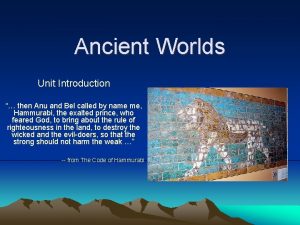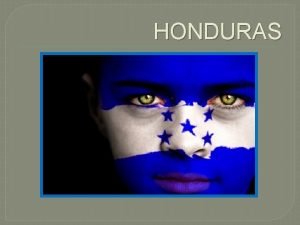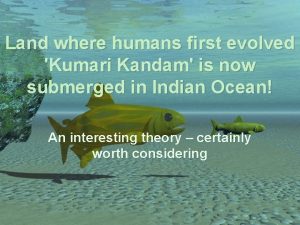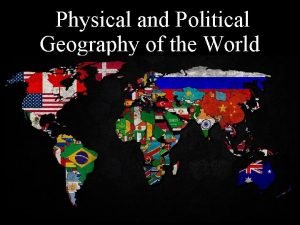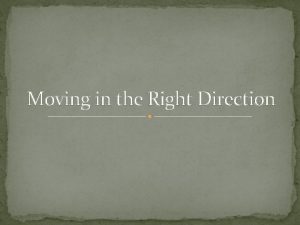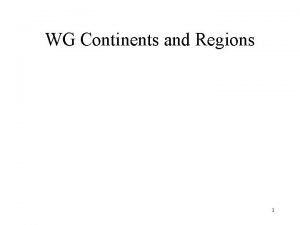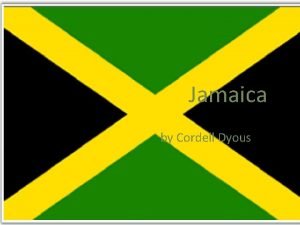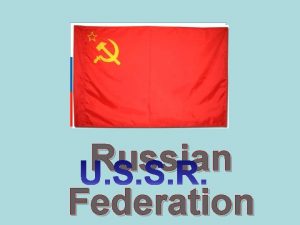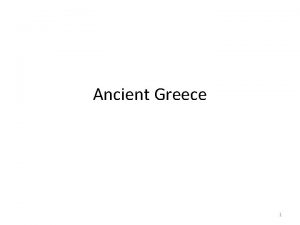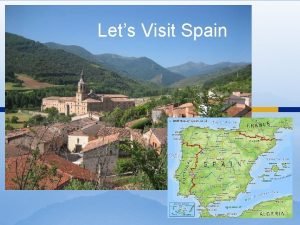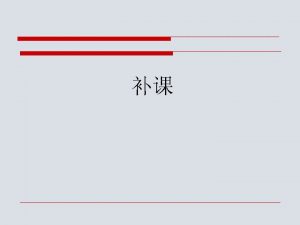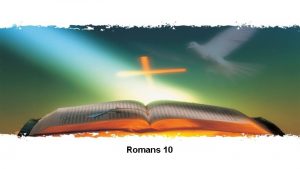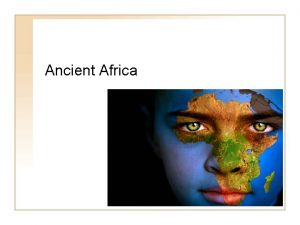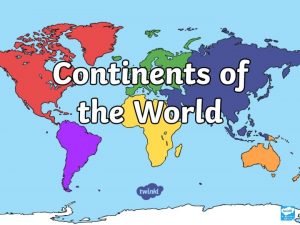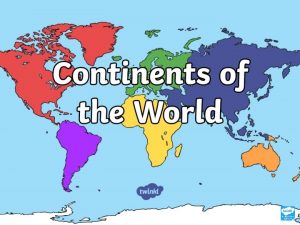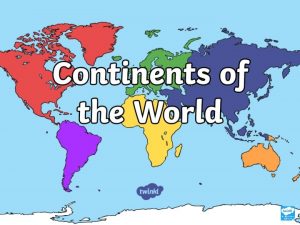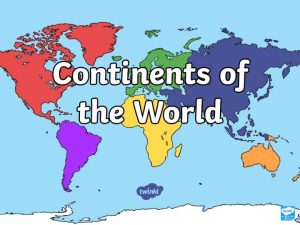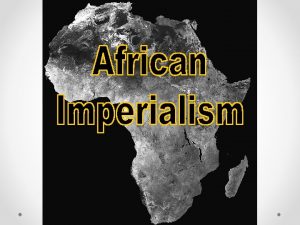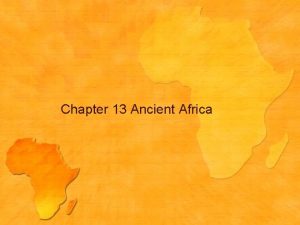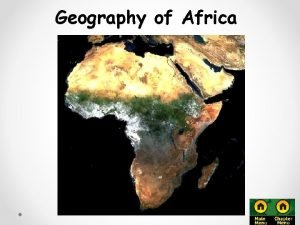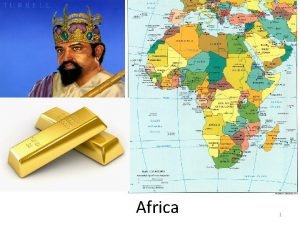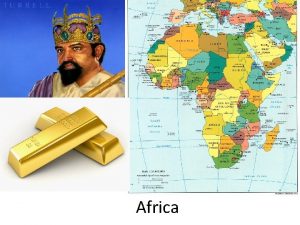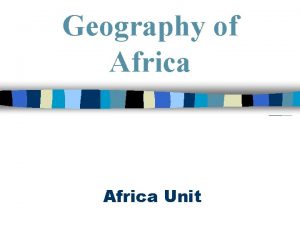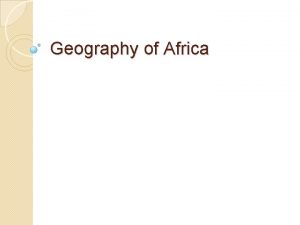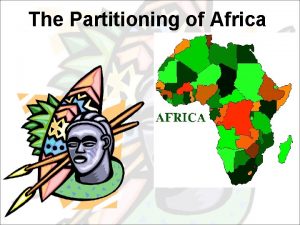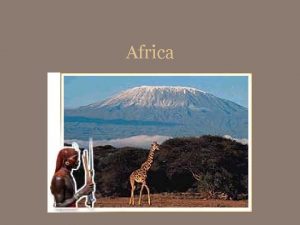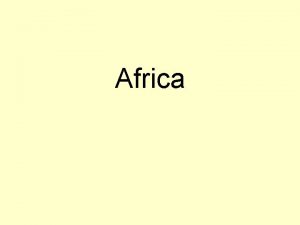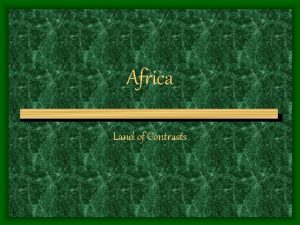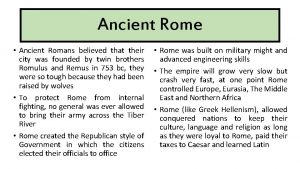Africa The Ancient Romans called the continent Africa


























- Slides: 26

Africa The Ancient Romans called the continent Africa from the Latin word aprica meaning sunny….

Africa • World’s 2 nd largest continent. • Location: Almost centered on the equator, which affects its vegetation, climate, and population patterns. • Continent stands between Atlantic Ocean (west) and Indian Ocean (east). Mediterranean Sea in the north and the Red Sea in the Northeast also border Africa

Africa • Regions: North Africa, West Africa, East Africa, Central Africa, and Southern Africa. • Each region is unique and has it’s own identity. • Regional differences contribute to the diversity of African peoples. • Rich in natural resources, but unevenly distributed

Regions • North Africa stretches from Morocco in the west to Egypt in the East. Location contributes to its historical ties to Europe and Middle East.

Regions • North Africa linked to the regions south of the Sahara. These regions are often referred to as sub-Saharan Africa.

Regions • South of Sahara, West Africa bulges to Atlantic • Central Africa, includes the large nation of Democratic Republic of the Congo (on equator). • East Africa largest nations are Kenya, Uganda, and Tanzania. Great Rift Valley-a series of mountains and valley’s slices eastern part of continent • Southern Africa: SA, Zimbabwe, Zambia

Africa • Region: 650 million of Africa’s 800 million people live south of the Sahara. • Divided into more than 800 ethnic groups, each with it’s own language, religion, and culture.

Landforms Most Africa = 2/3’s either desert or dry lands • Mountain ranges toward the edges (Atlas Mts in NW & Drakensberg Mts in SE) • Highest Plateaus in East (Mt. Kilimanjaro) • Escarpments: steep cliffs divide plateaus from coastal plains • Cataracts: large waterfalls Mt. Kilimanjaro

Africa: Cradle of Civilization? • Anthropologists claim that Homo Erectus, the walking predecessors of modern humans, migrated from Africa about 1. 8 million years ago. * • Birthplace? Olduvai in Tanzania *Source: Palmer, R. R. “A history of The Modern World, ” Mc. Graw-Hill, 2002. pg. 1


Great Rift Valley • Flanking the Rift Valley are high, cliff like walls. • Soils have washed down into valley • The valley contains some of Africa’s most fertile farmland. Valley is rich in minerals & metals. Mining and transportation difficult due to terrain.

Great Rift Valley • Split along East that extends 4, 000 miles • Plates of Earth’s crust have moved apart, volcanic activity created Mt. Kilimanjaro and Mt. Kenya.



Climate and Diversity • Four Major Climate Zones: differences in amount of rainfall distinguish each zone. • Rainfall –or lack of it-determines climate on the continent. • Money in Botswana called, pula = rain http: //www. youtube. com/watch? v=Kh. B 1 B 6 c. Obd. U&feature=related • Northern and Southern half are mirror images of each other. Climates are: tropical wet, tropical wet and dry, desert, & Mediterranean.

Deserts of Africa • Deserts cover nearly 40% of Africa…Sahara in the north and Kalahari and Namib (na-mib) in the south • Sahara Desert is larger than continental U. S. Temp’s can reach as high as 130 F. , can go years w/o rain, avg. less than 10 in. annually • Sahara historically both a barrier and a highway for travel-camel caravans salt and goods • Namib Desert, one of driest places on Earth


Desertification • Process by which land becomes increasingly dry until almost no vegetation grows on it, making it a desert

Desertification: Process of becoming a desert • How? Natural forces and human action put land at risk. Grazing herds destroy the roots of the grasses, so the thin layer of topsoil Desertification turns to dust. 3 Big Problems associated with it Famine, leads to no crops to eat cause no water for plants, poor soil Conflict Migration


Desertification and the Problems associated with it Poverty Climate Change Water issues such as runoff and flooding (leads to drought) Famine Social Disruption Desertification increases drought, poverty and hunger around the world! It also contributes to increased social violence, abuse of women and children, cultural genocide and emigration to cities and other countries.

So how to address the problem? (Desertification reading and worksheet) • • Preventing soil exhaustion Diversify production Land restoration Reducing the herd One way that incorporates all of these is something called “Holistic Management” which results in ecologically regenerative, economically viable and socially sound management of the world’s grasslands!

How to address the problem? Tunisia (Northern Africa) Tunisia: crops planted along the contour line is a sensible method to adapt agricultural practices to topographic realities. *this is effective in preventing soil exhaustion © Yann Arthus-Bertrand / Earth from Above/ UNESCO

How to address the problem? Mali (Western Africa) Mali: diversifying agricultural production better employs land resources and prevents over production of a sole product. In the drylands and oases, man has had to devise clever ways to exploit the fragile natural resources in a sustainable way. © Yann Arthus-Bertrand / Earth from Above / UNESCO

How to address the problem? South Africa: holistic land management land restoration is possible as seen here! The most promising – if not the only – way to effect this positive change on a largescale is use properly managed livestock to restore the grasslands of the world. © Yann Arthus-Bertrand / Earth from Above/ UNESCO 1 cow every 44 acres versus 1 cow every 68 acres

Allan Savory: Grassland ecosystem pioneer • Holistic management http: //www. youtube. com/watch? v=5 LHoh-OKUf. U Hear Allan Savory: http: //www. ted. com/speakers/allan_savory. html • AFRICA CENTRE FOR HOLISTIC MANAGEMENT This is an excellent website http: //www. savoryinstitute. com/
 Divergent vs convergent boundaries
Divergent vs convergent boundaries Convergent continental boundary
Convergent continental boundary What contient is greece in
What contient is greece in Greek civilization map
Greek civilization map What are continental plateaus
What are continental plateaus 2nd largest continent
2nd largest continent Ancient romans achievements
Ancient romans achievements Ancient india vs ancient china
Ancient india vs ancient china Ancient means of communication pictures
Ancient means of communication pictures Ducksters ancient africa
Ducksters ancient africa The ancient sports during 100b.c to a.d500 is called
The ancient sports during 100b.c to a.d500 is called Which continent india is located
Which continent india is located Honduras continent
Honduras continent Un continent aflat exclusiv în emisfera sudică
Un continent aflat exclusiv în emisfera sudică Kumari kandam
Kumari kandam What continent is panama in
What continent is panama in What is a continent
What is a continent Continent echo song
Continent echo song 7 continents in order
7 continents in order Chapter 18 the plateau continent
Chapter 18 the plateau continent Apush chapter 16 conquering a continent outline
Apush chapter 16 conquering a continent outline What continent is jamaica
What continent is jamaica Russia continent
Russia continent Rome continent
Rome continent Spaincontinent
Spaincontinent What continent is mesopotamia in
What continent is mesopotamia in Largest island smallest continent
Largest island smallest continent




